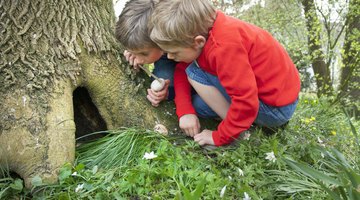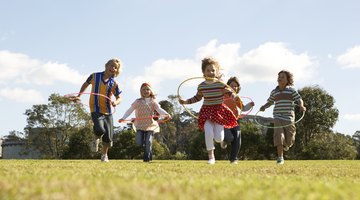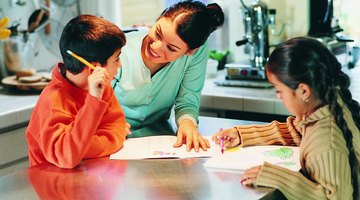Observation Activities for Children
Children with keen observation skills collect information and form questions. This is the basis of inquiry and it leads to discovery and learning. Observation involves the senses of sight, hearing, touch, smell and taste.
Teachers, parents and caregivers should engage children in activities designed to sharpen their competence in observation. These endeavors boost memory, calm restless children and serve as ice-breakers for social gatherings or the first day of school.
What's in the Bag?
Divide the children into groups and distribute an identical bag of objects, including pencils, paper clips, flashlights, candles, marbles and erasers, to each group. Have the group members sit one behind the other on the floor or at desks.
The first person in line takes an object from the bag, observes it and without turning around passes it backward.
When the object reaches the last person, he hides it in an empty bag.
When finished, the group records a list of remembered items.
The team listing the most objects wins. In case of a tie, the faster group prevails.
Quick Change

Fine & Gross Motor Skills Activities
Learn More
Have the children form two lines with each child facing a partner. Instruct them to carefully observe their partner. When given a predetermined signal, the children turn back-to-back and change three things. They might remove headbands or untie shoes. After a minute, tell the children to turn back around, observe their partner and state the changes that they see.
Leaf Observation
Take your children outside to gather leaves.
When back inside, have them create leaf-picture booklets. Provide magnifying glasses so they can have a closer look at the leaves.
You should first model the process on an overhead projector.
Say, “I am drawing an oval for my leaf because of its shape.
I am making a dark line down the center to represent the vein of the leaf.” Direct the students to draw and color their pictures to match the original leaves. Adapt this concept to other science activities.
Fruit and the Senses

Classical Conditioning Classroom Exercises
Learn More
This activity works well for parents at home with younger children. Place three fruits, such as an orange, peach and pear, on a plate.
Blindfold the child and tell her to pick up the fruit, describe its textures and tell how each piece of fruit feels and smells. Tell her to taste the fruit and make a guess before removing the blindfold to see the types of fruit.
The Invisible Gorilla
During a selective attention test administered to students at Harvard University, psychology researchers Daniel Simons and Christopher Chabris showed an 82 second video of six students passing a basketball. They asked observers to count the total number of basketball passes.
Although many students counted the passes correctly, 50 percent did not notice that a gorilla appeared on the screen for nine seconds, looking at the camera and pounding his chest. Try this experiment with older children. Use it as a discussion springboard about how people don’t always notice what’s in front of them.
Concentration Game
Use matching games to enhance a child’s observational skills. Children can compete against parents, peers or the computer using online matching games.
For hands-on play, provide a standard deck of cards or make your own set to suit the age group.
Children turn over matching pairs, including the ace of hearts and the ace of spades, and collect them in a “win” pile. When all cards are taken, the person accumulating the most matches wins the game.










